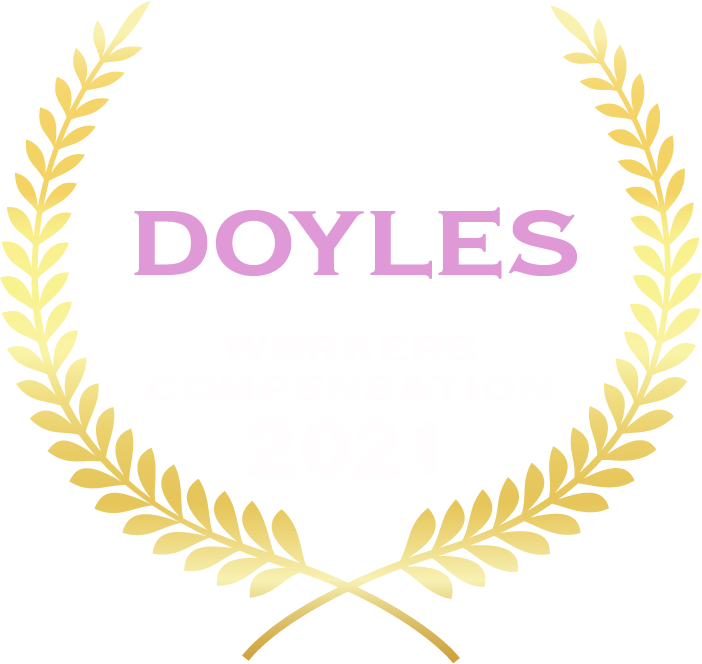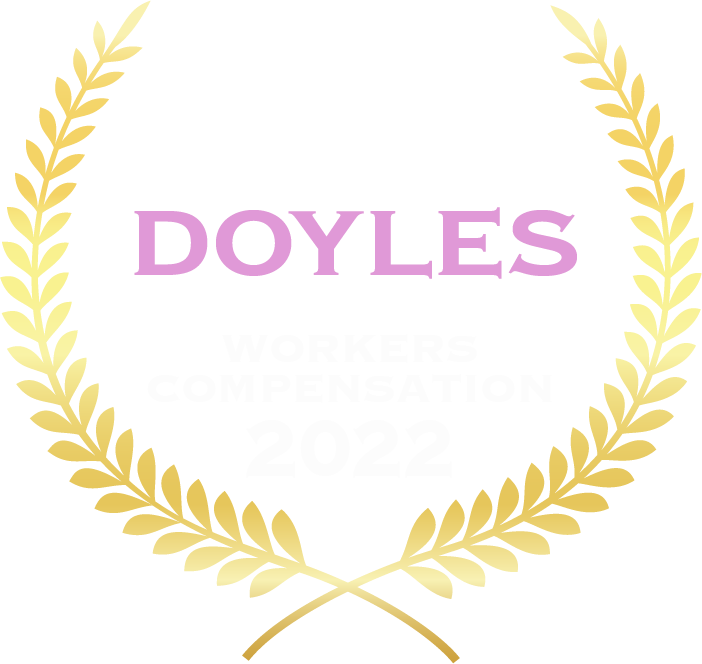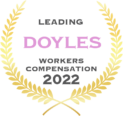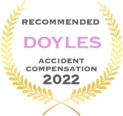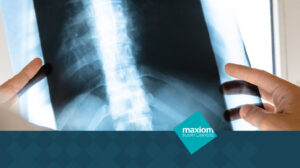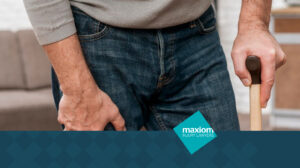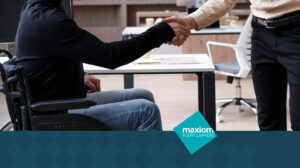A slip-and-fall injury in the workplace or a public place can be distressing if you’re affected. Not only are you worried about how your injuries might impact your ability to work, but finding out your next steps and what you’re entitled to can be confusing.
After such a slip and fall, you may be legally entitled to compensation for loss of earnings and the cost of medical treatment, expenses, and rehabilitation. In addition, you may also be eligible for further compensation in the form of lump sum payments for permanent impairment and damages for negligence, depending on where and how the injury occurred.
Compensation claims can be challenging to navigate, and most people are unsure where to start. However, understanding the necessary steps to take is crucial when trying to retrieve the maximum compensation you deserve.
So whether you or someone you know has been injured as a result of a workplace accident or an injury has occurred because of a slip, trip or fall in a public or private place keep reading to learn more or contact our public liability lawyers in Victoria today.
How Can a Slip and Fall Accident Happen?
A slip or fall can happen at work or in a public place if there is a hazard and reasonable measures have not been put in place by your employer, the manager of the building, the property owners, or the business to prevent a slip or fall from happening, such as no warning signs or poor lighting.
Some common hazards that can cause a slip-and-fall accident include:
- Wet or recently waxed slippery surfaces without adequate hazard signage
- Uneven ground
- Torn carpeting
- Missing or loose tiles, steps or floorboards
- Debris cluttering walkways, especially in high-traffic areas and zones that should be free of trip hazards
- Cracks in the floor or sidewalk
- Uneven staircases or staircases lacking proper railings
- Poor lighting
- Cables scattered across the floor
- Potholes in parking lots.
What are the most common injuries caused by slip and fall accidents?
A slip or fall at work or in a public place can leave you suffering intense pain, numbness, and lack of mobility. It can result in a variety of debilitating injuries.
The most common injuries caused by slip and fall accidents include:
- Broken bones
- Head injuries
- Traumatic brain injuries
- Spinal cord injury
- Loss of limbs
- Back injury
- Neck injury
- Finger Injuries and hand Injuries
- Loss of use of a limb
- Sprain
- Fracture
- Soft tissue injury
- Herniated disc
- Internal injuries
- Paraplegia
- Quadriplegia
- Bruises, cuts, scrapes, and abrasions.
Slip or Fall at Work
Who is liable for a slip or fall at work?
It is the legal responsibility of your employers to take reasonable care not to maintain safe premises and not expose its workers to the risk of injury. They must address all potential hazards and provide, establish, and enforce a safe system of work. This is called duty of care.
Can you sue your employer for a slip and fall accident at work?
Yes, you can sue your employer for a slip and fall accident at work and file a workers compensation claim if they have been seen as negligent and / or appropriate procedures have not been met, which has resulted in an unsafe work environment that has played a role in your slip or fall accident.
After a work-related trauma, you are legally entitled to financial support to help you recover. It doesn’t matter who was at fault.
However, proving negligence can be complex. It is important that you seek the advice of an experienced workcover lawyer in Melbourne who can help you understand your rights, what you can claim, and where you stand.
What happens if I slip and fall at work?
Slipping and falling in a public place can be a particularly embarrassing experience. It can also leave you with permanent and significant injuries that could take you out of work for days, weeks, months or years.
Depending on the severity of your injury and how it was caused, if you suffered a workplace trip and fall accident, you may be entitled to compensation.
There are a number of steps you need to take after a slip or fall injury at work to have the best chance of workers compensation claim success and to receive the full compensation you deserve.
What is the best procedure after a slip or fall at work in Victoria?
The best procedure and steps to take after a work slip and fall accident in Victoria are:
1. Slip or fall at work occurs
2. Seek Medical Treatment
Call an ambulance if necessary and seek medical attention immediately or as soon as possible. Even if you do not feel the injury is severe, you should consult a doctor as severe, internal damage or complications can take days or even weeks to present themselves.
Seeking medical attention and diagnosing your injuries after an accident at work straightaway can help strengthen potential workers compensation claims.
It can also help strengthen your claim that your injuries are work-related, as your employer may argue the injuries occurred outside of work and not as a result of your slip or fall.
Remember, when you get medical assistance or see a doctor, you should inform them why you are there and that you are seeing them following an accident a work.
Obtain medical proof you need from a registered medical practitioner – Your doctor or medical professional will be able to supply you with the supporting documents and medical evidence you need to prove your injury and the validity of your workers compensation claim.
Medical evidence you require for your work injury compensation claim includes:
- Diagnostic reports
- Certificate of capacity (how the injury has affected your ability to work)
Obtain the name and contact details of your medical practitioners.
Keep all information from your visit – including medical records, medical reports, receipts, and travel expenses. Ensure these are ready and on hand.
3. Document the Accident Scene and Gather evidence
Document and gather evidence from the scene as quickly as possible.
Take photographs – If possible, take photographs and videos of the accident location, your injuries and any obstacles and / or hazards (such as spilled liquids, torn carpeting etc.) that caused you to slip or trip. Photos should also include lighting conditions and any visual obstructions.
Obtain details of any witnesses – Obtain contact details of witnesses in case a statement is needed in the future. You should also request copies of any photos and / or videos taken.
4. Keep a record of all documentation and stay organised
This includes photos, details of every person involved during the process, evidence, medical bills, and anything else that may be of importance.
No evidence or information is too much. It is better to have the information and not need it than to need it and not be able to obtain it. So make sure you collect all the information, write it down, keep it in a safe, accessible space and get advice on how and when to use these details.
5. Report Your Slip and Fall accident to your supervisor or manager
File a report of the accident to your employer, the manager of the building or business immediately.
Notifying them that you have suffered a slip and fall in the workplace ensures they have a record of the event. Notifying them of the hazard can also prevent the incident from happening again to someone else.
6. File your workers’ compensation claim
You should file a workers compensation benefits claim as soon as possible after your slip or fall at work with your employer’s workers’ compensation insurance. or the Worksafe website.
How do I make a Workplace Injury claim?
To make a Workplace Injury claim, lodge a claim via your employer or the Worksafe website.
The fastest and easiest way is to complete and submit a claim form on the Work Safe website.
7. Seek legal advice and representation from an expert workers compensation lawyer in Melbourne
The benefits of working with a personal injury lawyer cannot be over-emphasised.
Workers compensation claims can often be complex and time-consuming. Your lawyer has an in-depth understanding of the legal processes and tactics employed by insurance companies. Their role is to advise you on how to fill out the necessary paperwork to maximise your chances of success, alert you to the required evidence you will need, and help you understand what compensation you might be entitled to.
Talk to a no-win no-fee lawyer and provide them with all the information and details required. No question, concern, or worry is too much. An experienced workers compensation lawyer will have dealt with similar cases and can help advise you on everything you need. Ask questions and get to know them personally. This is your workers compensation claim, and you are entitled to the maximum compensation and the best legal advice to help you win your case.
To get the most out of your compensation payout and to win a workers compensation claim, you need a competitive and passionate legal representative with a high success rate who can help you navigate through the legal procedures and cut through the tape to get you the maximum compensation you deserve.
Further steps that may be required:
8. You may need to attend a serious or significant injury medical assessment for an independent evaluation of your injuries
9. Parties seek to settle the matter out of Court through mediation, this is called the pre-litigation phase
10. If no resolution is achieved at mediation, further legal proceedings commence
11. The hearing date is set
12. The legal case is heard before a Court and jury to determine an appropriate settlement.
What is a workers compensation payout?
A workers compensation payout is a claim for no-fault workers compensation if you have had a physical or psychological injury as a result of your workplace environment. You may also be eligible to make a workers compensation claim if you have a pre-existing injury or illness made worse by reason of your employment.
Can I claim workers compensation?
Yes, Victorians who have been injured at work and / or were exposed to hazardous dust may be entitled to claim rightful entitlements for:
- Weekly payments
- Impairment benefit
- Lump sum for your pain and suffering and loss of earnings
- Superannuation benefits
- Dependency claims.
How long do I have to make a workers compensation claim?
Your workers compensation claim must be lodged within three years from the date of the accident.
What is the average payout for workers compensation?
The average workers compensation payout ranges from $6,000 to $28,000, according to the Australian workers compensation statistics reports for 2020-2021. However, the average payout depends on the type of workers compensation claim and the industry you work in.
The report shows that the Food and Accommodation industry has the lowest average payout, whereas the Mining industry has the highest average.
Download the Australian workers compensation Statistics 2020 – 2021 or visit the Safe Work Australia government website for more information.
Disclaimer: Figures are correct as of 13/12/2023. Workers compensation claim fees are subject to change at any time. Compensation payouts for injuries may vary depending on various factors, which can affect the payout at the time of delivery. For current figures, visit the Work Safe Australia website or contact us today to discuss what compensation amount you may be entitled to.
For how long will you receive workers’ compensation benefits?
You can get workers compensation benefits for up to 130 weeks. If you have no capacity for work which is likely to continue indefinitely, then your weekly payments can continue to be paid at the rate of 80% of your pre-injury weekly earnings.
Can you work after a workers compensation settlement?
Yes, you can work after a workers compensation settlement if you feel ready to do so and your workers compensation settlement does not prevent you from returning to work if you recover from your injuries.
Slip and Fall in a Public Place (Public liability claims)
After a slip, trip or fall in a public place, it can often be difficult to identify who was responsible for your accident and whether you have a right to make a public liability claim.
What is a public liability claim?
A public liability claim is the potential compensation you may be entitled to if you suffered a slip, trip, fall or accident in a public or private place due to negligence or through the fault of a third party or another entity.
Who is entitled to a public liability claim?
A person is entitled to compensation if they are a victim of an accident within a public place due to another person’s negligence resulting in harm, loss, or damage.
What are the common causes of slip and fall public liability claims?
The slip, trip or fall accident can be caused by:
- Defective products
- Falling objects
- Building and Construction failures.
Who is liable for a slip or fall in a public place?
It is the legal responsibility of the property owners to take reasonable care to maintain safe premises and address all potential hazards. This is called duty of care.
What is the best procedure after a slip or fall in a public place in Victoria?
The best procedure and steps to take after a slip and fall accident in a public place in Victoria are:
1. Injury / Accident occurs
2. Seek Medical Treatment
Call an ambulance if necessary and seek medical attention immediately or as soon as possible. Even if you do not feel the injury is severe, you should consult a doctor as severe, internal damage or complications can take days or even weeks to present themselves.
Seeking medical attention and diagnosing your injuries after an accident straightaway can help strengthen potential public liability claims.
Remember, when you get medical assistance or see a doctor, you should inform them why you are there and that you are seeing them following a slip or fall in a public place.
Obtain medical proof you need from a registered medical practitioner – Your doctor or medical professional will be able to supply you with the supporting documents and medical evidence you need to prove your injury and the validity of your public liability claim.
Medical evidence you require for your public liability claim includes:
- Diagnostic reports
- Certificate of capacity.
Obtain the name and contact details of your medical practitioners.
Keep all information from your visit – including medical records, medical reports, receipts, and travel expenses. Ensure these are ready and on hand.
3. Document the Accident Scene and Gather evidence
Document and gather evidence from the scene as quickly as possible.
Take photographs – If possible, take photographs and videos of the accident location, your injuries and any obstacles and / or hazards (such as spilled liquids, torn carpeting etc.) that caused you to slip or trip. Photos should also include lighting conditions and any visual obstructions.
Obtain details of any witnesses – Obtain contact details of witnesses in case a statement is needed in the future. You should also request copies of any photos and / or videos taken.
4. Keep a record of all documentation and stay organised
This includes photos, details of every person involved during the process, evidence, medical bills, and anything else that may be of importance.
No evidence or information is too much. It is better to have the information and not need it than to need it and not be able to obtain it. So make sure you collect all the information, write it down, keep it in a safe, accessible space and get advice on how and when to use these details.
5. Report Your Slip and Fall accident to the manager of the building or the business.
File a report of the accident to the manager of the building or business immediately
Notifying them that you have suffered a slip and fall ensures they have a record of the event. Notifying them of the hazard can also prevent the incident from happening again to someone else.
6. Seek legal advice and representation from an expert personal injury lawyer in Melbourne
Talk to a public liability lawyer in Melbourne and provide them with all the information and details required.
Further steps that may be required:
7. You may need to attend a serious or significant injury medical assessment for an independent evaluation of your injuries
8. Parties seek to settle the matter out of Court through mediation, this is called the pre-litigation phase
9. If no resolution is achieved at mediation, further legal proceedings commence
10. The hearing date is set
11. The legal case is heard before a Court and jury to determine an appropriate settlement.
Am I entitled to a public liability claim?
Yes, financial support may be available if you have been injured through an accident in a private or public place or because of a faulty or unsafe product.
What compensation am I entitled to after a trip or fall in a public place?
After a trip or fall in a public place you may be entitled to:
- Medical and associated expenses, including any help you need at home
- Past and future loss of wages, including superannuation
- Lump sum for your pain and suffering and loss of earnings
- Dependency claims.
Strict time limits apply, so we encourage you to speak with our slip and fall lawyers today to discuss your case and the entitlements you may be eligible for.
How long do I have to make a public liability claim?
Public liability claims can be lodged in Melbourne within three years of the accident, slip, or fall. However, in certain circumstances, you may be able to lodge a claim after three years if you become aware of the injury or pain after the three years have passed.
Slip and Fall Compensation in Victoria
How are the compensation settlements determined?
Compensation settlements are determined and calculated by the various factors, such as
- The extent of your injury
- The nature of your injury
- Loss of income due to the injury
- The impact of the injury on future earnings
- Medical expenses incurred due to damage.
Based on this information, the Insurer will assess your entitlement and put forward a compensation settlement payout amount. If you are unhappy with this proposed settlement amount, we recommend speaking with a specialist public liability lawyer to help you maximise your entitlements.
What do I have to prove for pain and suffering damages?
1. Significant Injury Threshold
You must satisfy that you have sustained a significant injury pursuant to the Wrongs Act 1958 (Vic). This means that you must establish a whole person impairment rating of 6% or more for physical injuries (except spinal injuries which is 5% or more), or 10% or more for psychiatric injuries.
Your level of impairment will be assessed in accordance with the Guides to the Evaluation of Permanent Impairment (4th edition) for physical injuries and the Guides to the Evaluation of Psychiatric Impairment for Clinicians for psychiatric injuries. The assessment of your impairment can only be performed once your condition is considered permanent and stable, and is usually performed after 12 months from the date of your injury.
2. Negligence
It must be established that the occupier breached its duty of care in failing to ensure that the premises were safe. The occupier’s breach can be proven in circumstances where it was reasonably foreseeable that their inaction or action unnecessarily exposed you to a risk of injury. In making this determination, the following can be considered:
- Whether the occupier had identified the potential hazard.
- What steps were taken by the occupier to eliminate the hazard?
- Whether the occupier had notified people about the potential hazard, i.e. were warning signs erected?
- Whether lighting around the accident location was poor.
How can a medical certificate help my slip and fall claim?
A medical certificate can help your slip and fall claim by:
- Helping assist any parties to make a decision and come to a satisfactory outcome for your claim.
- Helping all involved parties to determine the best long-term treatment or support required for your injury; and what level of compensation will ensure you can continue that treatment/support.
- Helping determine your capability for work and independence, the predicted treatment and/ or your capacity for rehabilitation.
What are the types of medical proof and evidence for a slip and fall claim?
The types of medical proof and evidence for a slip and fall claim are:
- Medical certificates
- Medical reports
- A certificate of capacity
- Witness statements.
How can I obtain a medical certificate, medical proof or certificate of capacity for my slip or fall payout claim?
You can obtain medical evidence for your slip and fall payout claim by seeking medical attention immediately after the accident. We recommend that you seek medical advice as soon as possible after your injury to ensure that you have detailed documentation that supports your claim.
The claims manager with your Insurer will ask that you provide a medical report from your treating practitioner. You may also be required to be assessed in an independent medical examination (IME).
Who can provide a medical certificate for my slip and fall payout claim?
You can obtain a medical certificate or medical diagnostic report for your slip and fall claim from a legally qualified medical practitioner (LQMP), which includes the following:
- General Practitioner
- Surgeon
- Dentist
- Chiropractor
- Physiotherapist
- Massage Therapist
- Osteopath
- Optometrist.
The medical certificate, prognosis, and / or diagnosis provided to help your personal injury claim must be obtained from the correct medical professional or doctor for your injury.
What does slip and fall compensation cover?
Slip and fall compensation can help cover:
- Pain and suffering damages
- Past and future medical and like expenses – Keep copies of any receipts for costs incurred as a result of your injury.
- Past and future loss of earnings damages – Create a logbook of all dates you were unable to work due to your injury.
- Gratuitous Care – You can claim unpaid domestic care, provided it has been for at least 6 months and 6 hours per week.
Strict time limits apply, so we encourage you to speak with personal injury lawyers today for information about your rights and entitlements.
How long does a slip and fall settlement take?
Most slip and fall claims in Australia take around one to two years from the date of your injury depending on the case complexity, your individual circumstances and if it needs to go to Court.
However, you should not rush into a settlement quickly. We understand wanting the process to be over as quickly and stress-free as possible, but this will not always result in the best outcome for you.
For the best chance of a quick compensation settlement contact a personal injury lawyer with a high success rate who can help you navigate through the legal procedures quickly and efficiently and cut through the tape to get you the maximum compensation you deserve.
And be as detailed as you need to be with your lawyer. No detail or information is too much. An expert workers compensation lawyer will take all the details and information you have provided and let you know if any more information is required.
Who can help me with my slip and fall claim?
Our team at Maxiom Injury Lawyers are passionate advocates of social justice. We will fight relentlessly to ensure that our clients receive their full legal entitlements so they can concentrate on healing from their losses.
We can help you claim rightful entitlements for the following:
- Weekly payments
- Medical and associated expenses
- Permanent impairment benefit
- Damages settlement for your pain and suffering and loss of earnings
- Dependency claims
- Financial support to help you recover.
Why Maxiom Injury Lawyers?
In our experience, clients receive the most benefit during the legal process when they work with a lawyer who actively listens to their stories and understands their concerns about the legal process.
That’s why at Maxiom Injury Lawyers, you will be partnered with an Accredited Specialist in Personal Injury Law who is accessible when you need it and will advocate for your rights, be your voice and ensure you receive your full and fair entitlements. We are also committed to keeping legal fees low so that you receive the maximum amount of compensation.
We win complex cases.
Maxiom Injury Lawyers is proud to have taken on and won complex cases.
Find out where you stand.
We can help you navigate the various insurance schemes and provide an avenue for you to pay for the treatment or rehabilitation you need to recover from your injury.
Your Path to Recovery
The path to recovery after an injury can involve significant stress and financial hardship. At Maxiom Injury Lawyers, you will work with a dedicated lawyer who will support you through the entire claims process and help you meet your recovery goals.
Why we do, what we do
Speak to our personal injury lawyers today.
To start your path to recovery, you can contact us at any time by phone or by enquiry form. If you are not quite ready to speak to us, we also offer a Free Claims Check so you can find out if you are eligible to make a claim for your injury.
“I injured my back at work and was recommended to talk to Sach at Maxiom Injury Lawyers. Money can’t heal my injury but does help relieve the stress of paying the mortgage. If you are injured and need a supportive team around you, call Sach.”
– Joanne Clancy
“If you’re seeking to make a public liability claim I highly recommend Maxiom Injury Lawyers. Sach Fernando and his staff were wonderful, their advice, guidance and efforts helped me obtain a satisfactory result”
– Sue Weate

